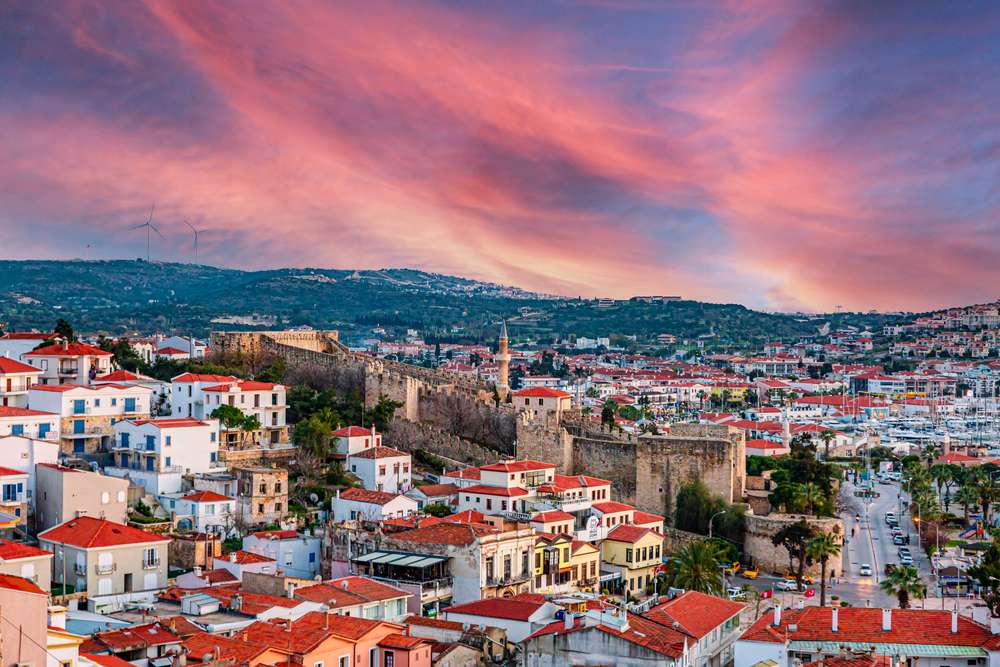Turkish cuisine is a rich tapestry woven from centuries of history, diverse cultures, and geographical influences. As you embark on a culinary journey through Turkey, you’ll find that its cuisine is far more than just kebabs and baklava. It’s a reflection of the country’s unique blend of flavors, traditions, and regional specialties. In this article, we’ll explore the diversity of Turkish cuisine and the cultural fusion that makes it a culinary treasure trove.
A Melting Pot of Flavors
At the heart of Turkish cuisine lies a harmonious fusion of flavors, thanks to the country’s historical position at the crossroads of Europe and Asia. Turkish cuisine has been shaped by the culinary traditions of many cultures, including the Ottoman Empire, Central Asia, the Middle East, and the Mediterranean. This blending of diverse influences has given birth to a unique and delectable cuisine.
Meze: A Mosaic of Appetizers
A Turkish meal often begins with a selection of meze, a variety of small dishes that serve as appetizers. Meze can include anything from olives and yogurt-based dips to stuffed grape leaves and roasted eggplant salads. These flavorful starters are designed to tantalize the taste buds and set the stage for the main course. While kebabs are indeed a beloved part of Turkish cuisine, they come in countless variations. From the iconic Adana kebab, made with spicy minced meat, to shish kebabs featuring succulent cubes of marinated meat and vegetables, there’s a kebab for every palate. Don’t miss the opportunity to savor a traditional doner kebab, thinly sliced from a rotating vertical rotisserie, often served in pita bread with fresh vegetables and yogurt sauce.
Lahmacun and Pide: Turkish Pizza
Lahmacun and pide are often referred to as Turkish pizza, but they are unique creations in their own right. Lahmacun is a thin, round dough topped with a mixture of minced meat, onions, tomatoes, and spices. Pide, on the other hand, is a boat-shaped flatbread filled with various ingredients, such as ground meat, cheese, or vegetables. These savory delights are a must-try for anyone exploring Turkish street food. Rice and grains play a central role in Turkish cuisine. Pilaf, known as “pilav” in Turkish, is a staple dish made by sautéing rice in butter or oil and simmering it with broth or water. Turkish pilaf can be as simple as plain rice or as complex as “sultan’s pilaf,” enriched with nuts, dried fruits, and aromatic spices. Bulgur, a cracked wheat product, is another essential ingredient used to prepare dishes like “kısır” (a bulgur salad) and “çiğ köfte” (raw meatballs).
Seafood: Coastal Treasures
Turkey’s extensive coastline along the Mediterranean, Aegean, and Black Seas provides an abundance of seafood. Grilled fish, calamari, and shrimp are popular choices, often seasoned with herbs, olive oil, and lemon juice. “Hamsi,” or anchovies, are a specialty in the Black Sea region, where they are prepared in various ways, from fried to marinated. Turkish desserts are a sweet symphony of flavors, with baklava being perhaps the most famous. Layers of thin pastry, filled with nuts and sweetened with syrup or honey, create a decadent treat. But Turkish desserts go far beyond baklava. Try “künefe,” a dessert made of shredded pastry soaked in syrup and layered with cheese, or “lokum,” the iconic Turkish delight that comes in a rainbow of flavors.
Regional Specialties: Culinary Diversity
One of the most fascinating aspects of Turkish cuisine is its regional diversity. Each region of Turkey boasts its own unique dishes and ingredients. For example:
- In the southeast, you’ll find spicy dishes like “iskender kebab” and “kuzu tandır” (slow-roasted lamb).
- The Black Sea region is known for its “mıhlama,” a creamy cornmeal dish, and “kuymak,” a cheese and cornmeal dish.
- In the Aegean region, “zeytinyağlı” dishes, which are prepared with olive oil and fresh vegetables, are a culinary tradition.
- Gaziantep, in the southeast, is famous for its rich and spicy kebabs and savory pastries.
Turkish Tea and Coffee: A Cultural Tradition
No exploration of Turkish cuisine is complete without experiencing the country’s unique approach to beverages. Turkish tea, served in small glasses, is a ubiquitous and beloved drink. Turkish coffee, on the other hand, is a strong and finely ground coffee brewed in a special pot called a “cezve.” It’s often accompanied by a small glass of water and a piece of Turkish delight.
In Conclusion
Turkish cuisine is a true cultural fusion, where history, geography, and diverse influences converge on the plate. Exploring the flavors of Turkey means embarking on a culinary adventure that spans from the bustling markets of Istanbul to the tranquil villages of the Aegean coast. So, indulge your senses and savor the diversity of Turkish cuisine—a journey that promises to delight every palate and reveal the rich tapestry of this culinary treasure.
More articles: The Success of New Zealand’s Education System on the Global Stage
